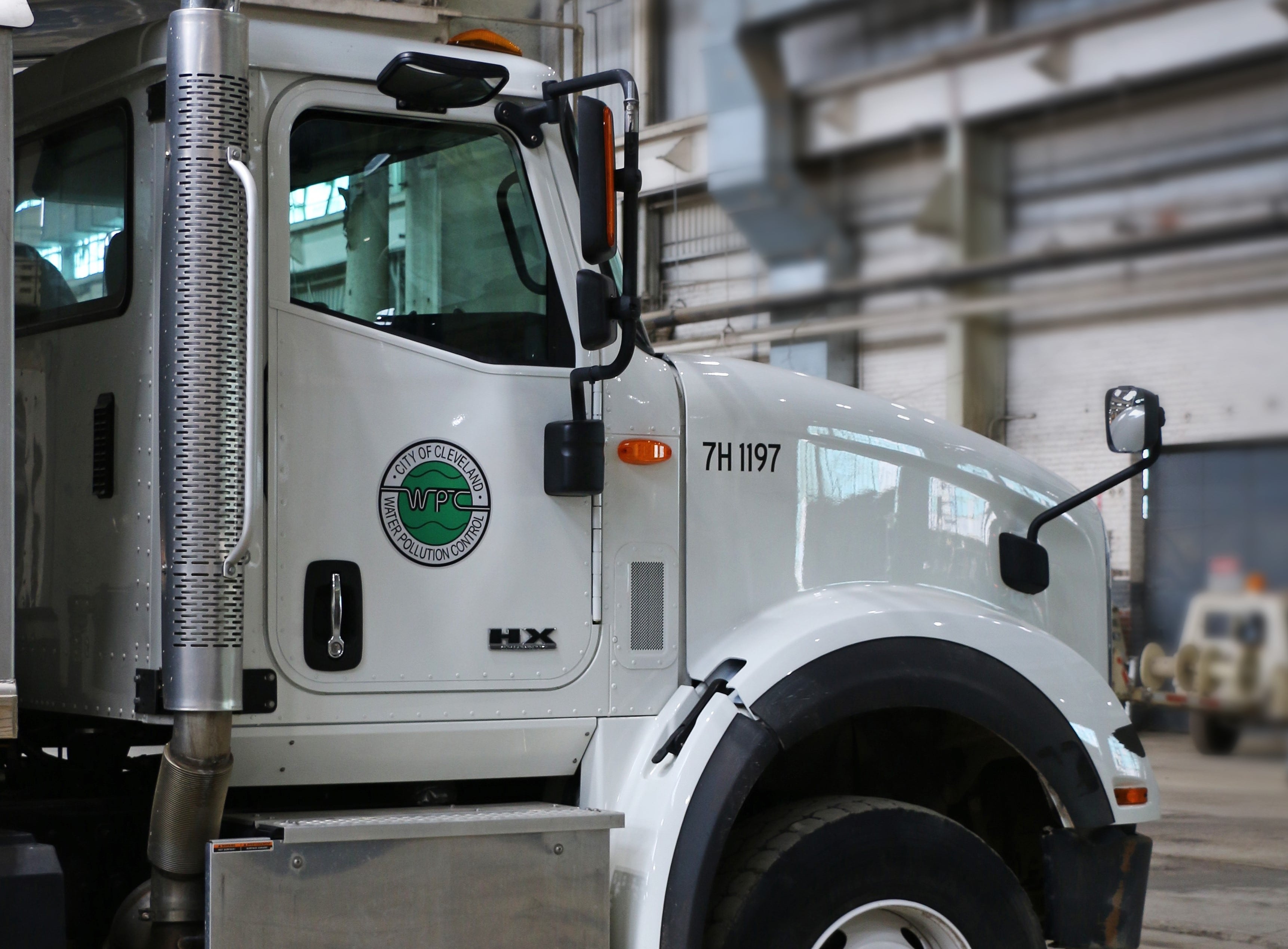Bioswale |
Bioswales are linear channels designed to concentrate and convey stormwater runoff while removing debris and pollution. Bioswales can also be beneficial in recharging groundwater.Bioswales consist of a swaled drainage course with gently sloped sides. |
Bulkhead |
A plug to close off a sewer line that is no longer in use. |
Catch Basin (CB) |
Curbside drain that collects rainwater from streets to prevent flooding on roadways and properties. |
Combined Sewer |
A Combined Sewer collects stormwater runoff and sewage water (wastewater) in a shared system. This type of sewer design is being phased out with new construction. Older cities, such as Cleveland, continue to operate previously constructed combined sewers. |
Combined Sewer Overflow (CSO) |
When it rains and the combined sewage and stormwater spills/overflows from a combined sewer line onto the ground and that spillage is carried to waterways untreated. |
Environmental Protection Agency (EPA) |
The EPA is an agency of the United States federal government whose mission is to protect human and environmental health. Headquartered in Washington, D.C., the EPA is responsible for creating standards and laws that promoting the health of individuals and the environment. |
Green Infrastructure |
Green infrastructure is an approach to stormwater management that protects, restores, or mimics the natural water cycle. |
Illicit Discharge |
Any discharge to the municipal separate storm sewer system (MS4) that is not composed entirely of stormwater, except for discharges allowed under a NPDES permit or waters used for firefighting purposes. |
Lateral |
A sewer lateral is the underground pipe that connects a residence or business to a main sewer line. The city of Cleveland considers a lateral to be the property and responsibility of the homeowner or business owner. |
Main Sewer |
The main sewer is the primary pipeline in a sewerage system to which all the branching pipes carrying sewage from different locations are connected. The main sewer carries the sewage it receives from these branches to the treatment plant. |
Manhole Cover |
A Manhole cover provides entry to an underground world of utilities, including sewers. |
Municipal Separate Storm Sewer System (MS4) |
A municipal separate storm sewer system (MS4) is a publicly-owned system of conveyances (including but not limited to streets, ditches, catch basins, curbs, gutters, and storm drains) that is designed or used for collecting or conveying stormwater and that discharges to surface waters of the State. |
Nonpoint-Source Water Pollution |
Water pollution that is more difficult to identify and harder to address because it can come from many places all at once or a single source that is not immediately identifiable. |
Point-Source Water Pollution |
Water pollution that comes from a single, identifiable source, such as a specific factory. |
Rain Barrel |
Rain barrels capture water from a roof and hold it for later use such as on lawns, gardens or indoor plants. Collecting roof runoff in rain barrels reduces the amount of water that flows from your property. |
Rain Garden |
A bed of native plants in a small depression, which is generally formed on a natural slope. It is designed to temporarily hold and soak in stormwater runoff that flows from roofs, driveways, patios or lawns. This can help stop flooding and water contamination. |
Sanitary Sewage |
Sanitary sewage can be human waste or industrial waste that is drained into a sewer pipe is water that was used in a home, business, industrial plant, school, etc. before it, along with wastes flushed by the water, go down a drain and into sewer pipes. |
Sanitary Sewer |
A system of underground pipes that carries sewage from bathrooms, sinks, kitchens, and other plumbing components to a wastewater treatment plant where it is filtered, treated and discharged. |
Separate Sewer |
A separate sewer carries surface run-off and wastewater separately. Sewer separation has been used to reduce/eliminate combined sewer overflows. |
Sewerage |
Sewerage is the infrastructure or system of pipes, catch basins, pump stations, manholes, etc. that conveys the sewage or stormwater. Sewerage ends at the entry to a sewage treatment plant or at the point of discharge into the environment. |
Storm Drain |
A storm drain carries away excess water during heavy rain. |
Storm Sewer |
A system of underground pipes designed to carry rainfall runoff (stormwater runoff) and other drainage to nearby waterways untreated. |
Stormwater |
Water that originates from precipitation events, including rain, snow and ice melt. Stormwater can soak into the soil (infiltrate), be stored on the land surface in ponds and puddles, evaporate, or runoff. Stormwater runoff is a major environmental concern. |
Stormwater management |
Stormwater management is the effort to reduce runoff of rainwater or melted snow into streets, lawns and other sites and the improvement of water quality, according to the United States Environmental Protection Agency (EPA). |
Stormwater Pollution |
This occurs when debris, chemicals, sediment or other pollutants from industrial, construction, or urban areas get washed into water bodies, either directly or through storm drains. Uncontrolled stormwater discharges can pose significant threats to public health and the environment. The Clean Water Act requires that industrial facilities, construction sites, and municipal separate storm sewer systems (MS4s) have measures in place to prevent pollution from being discharged with stormwater into nearby waterways. |
Wastewater |
Any water that has been affected by human use. Wastewater is used water from any combination of domestic, industrial, commercial or agricultural activities, surface runoff or stormwater, and any sewer inflow or sewer infiltration. |
Water Pollution |
Water pollution is the contamination of water bodies, usually as a result of human activities. Water bodies include rivers, lakes and groundwater. Water pollution results when contaminants are introduced into the natural environment. |

